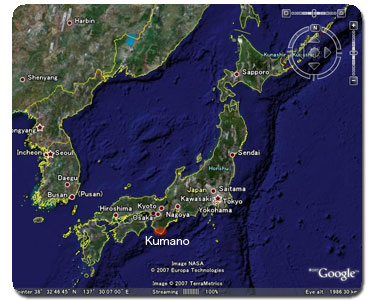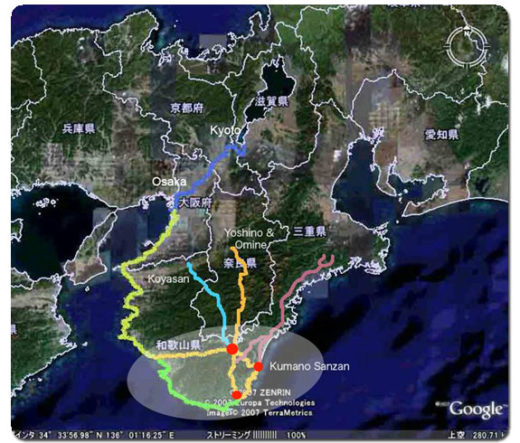Kumano is the ancient name for the southern part of the Kii Peninsula. This peninsula, located south of Osaka, Kyoto and Nara, is the largest in Japan. It is a spiritual hot spot containing Ise-jingu shrine, Yoshino & Omine, Koyasan and the sacred Kumano Sanzan Shrines. There is no official Kumano region today. This name dates back to prehistoric times and for the Japanese conveys a deep sense of mystery and awe. Kumano is associated not only with Yomi-no-Kuni, the mythical land of the dead, but also Buddhist celestial paradises.


